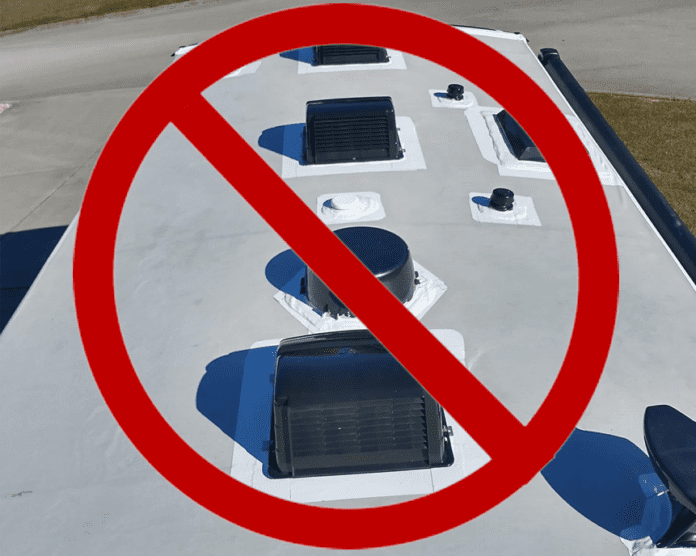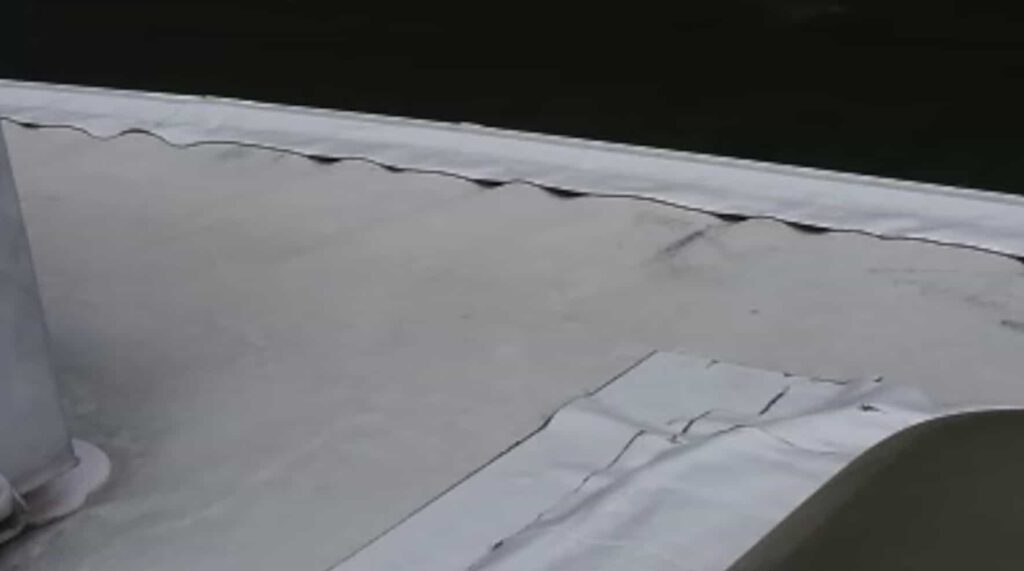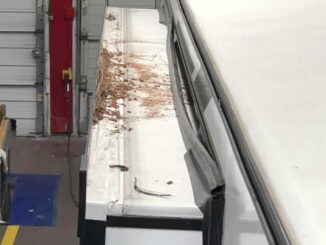

My wife and I manage several RV-related Facebook groups and belong to several others. Join us as we sit down to discuss a recent post highlighting the trend of covering all your RV roof seams with EternaBond tape.
Is this a good or a bad idea? Well, just like politics, folks lean hard one way or the other. While there certainly is a time and place for using EternaBond® tape (e.g., to use it as a patch), I have multiple reasons why you shouldn’t use it to cover all the seams on your RV roof.
Watch the video below to see my reaction when someone tapes their roof seams with EternaBond.
Advertisement/Affiliate
Reasons why you SHOULDN’T use EternaBond tape
The plastics on your roof get sun/weather-damaged over time and become brittle. Should you need to remove anything from your roof (such as a broken vent or a cracked skylight, or you want to do a TV antenna upgrade), you won’t be able to remove the EternaBond tape without damaging the roof membrane.

The plastic membrane in the tape will get sun damaged, just like all the plastics on your roof. That tape was not designed to be flexible to give and flex with the unit. Eventually, the tape will shrink up and cause the membrane to curl, creating toothpick-sized gaps which will allow water through and cause damage.

Nothing beats maintenance
At the end of the day, a maintenance-free RV just doesn’t exist. Sealants aren’t permanent. Nothing beats maintenance. It needs to be kept clean and touch up the sealants as necessary. You can get a roof coating, which will cover the roof membrane and sealants, but even then, it needs to be cleaned and routinely checked to see if there are any cracks or separations in the coating.
Join the discussion online
Join the fun online! We have multiple Facebook groups where others share their problems, repairs, and upgrades. There are general groups, and groups tailored to your specific RV manufacturer. There is something here for everyone. Here’s a list of all our groups.
Advertisement/Affiliate
Affiliate Links
Tools you’ll need to reseal your RV
Chemicals
- Denatured alcohol – (Some states and towns do not sell this anymore at local hardware stores)
- Acrysol – Available in a spray can – (see online store)
*Use paper towels or old rags when cleaning.
Tools
- Plastic scraper with handle
- Window glazing stick
- No-drip caulking gun Newborn 930-GTD Drip-Free
- Plastic razor blades
Sealant
- Dicor cap sealant white
- Dicor cap sealant clear
- Dicor cap sealant black
- Boss sealant clear
- Boss sealant black
- Geocel sealants clear
…or any RV sealants/RV silicone. Do NOT use Home Depot or Lowe’s silicone. There are hundreds of types of silicone. Make sure you use the right ones. When manufacturers say don’t use silicone, it’s because most people think of standard silicone or water-based silicone. You MUST use silicone and sealants made for RVs.
Hardware
- Pan White Head Screw # 8 X 1″ Quad Drive Self Tap Drill Screws
- Black Pan Head Square Recess Screw – Pack of 500
- Heavy Duty Vinyl Insert Trim, 1 inch Wide, 100 foot Roll, Black
- Heavy Duty Vinyl Insert Trim, 1 inch Wide, 100 foot Roll, White
- Heavy Duty Vinyl Insert Trim, 1 inch Wide, 100 foot Roll, Colonial
- Thetford RV gutter spouts polar white
- RV Rain Gutter Spout Long Version
- Aluminum White Flat End Cap for Trim Molding 1″ & Screws
Most manufacturers don’t seal everything, probably because it’s such a long process—especially when they advise you, as the owner, to check and seal as needed as part of maintenance.
Some manufacturers recommend every 30 days, others every 90 days. That number depends on use and weather conditions.
I really hope this information helps protect your investment.
More from Dustin
Dustin owns and operates California RV Specialists, an independent RV repair shop located in Lodi, CA. He thrives on sharing his knowledge and enthusiasm of RV repair and maintenance with his team, customers, and virtual friends.
Be sure to check out his YouTube channel where he shares what’s going on in the shop and the product offerings in the store. Dustin is also very active on Facebook. Join his group, RV Repairs and Tips – What’s in the shop!
Dustin proudly operates the business alongside his wife, Ashley; but the true pair that run the show are their Boston Terriers, Arvie and Hitch.



